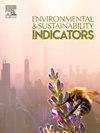How people perceive invasion impacts: Is there a match between policymakers and stakeholders?
IF 5.4
Q1 ENVIRONMENTAL SCIENCES
引用次数: 0
Abstract
Invasive alien species (IAS) pose significant threats to biodiversity, socioeconomic activities, and human health, prompting global legislative efforts to address their impacts. The European Union (EU) has been at the forefront of IAS management, implementing comprehensive regulations. However, the diverse cultural landscape of the EU complicates effective execution. This study, conducted within the EU LIFE INVASAQUA project, explores public perceptions of IAS impacts and evaluates the cultural and gender equivalence of a questionnaire designed to measure IAS awareness in freshwater and estuarine systems on the Iberian Peninsula. Additionally, we intent to disclose how many dimensions of IAS impacts people perceived, verifying if there are a mismatch between the policymaker's regulation and stakeholder's perceptions. Findings from Spanish and Portuguese respondents revealed two primary dimensions of IAS impacts: the environmental domain, encompassing biodiversity, and the societal domain, combining socioeconomic and human health impacts. While the EU regulation distinguishes between these aspects, stakeholders predominantly perceive them as a single societal dimension, indicating a divergence between policy frameworks and public understanding. Geographic, gender, and educational differences further shaped awareness, with higher literacy levels correlating with greater IAS knowledge. These insights underscore the need for targeted awareness campaigns that address societal heterogeneity and bridge gaps between scientific, policy, and public perspectives. Enhanced stakeholder engagement, validated methodologies, and tailored communication strategies are essential for improving IAS management and fostering societal compliance with regulations.
求助全文
约1分钟内获得全文
求助全文
来源期刊

Environmental and Sustainability Indicators
Environmental Science-Environmental Science (miscellaneous)
CiteScore
7.80
自引率
2.30%
发文量
49
审稿时长
57 days
 求助内容:
求助内容: 应助结果提醒方式:
应助结果提醒方式:


